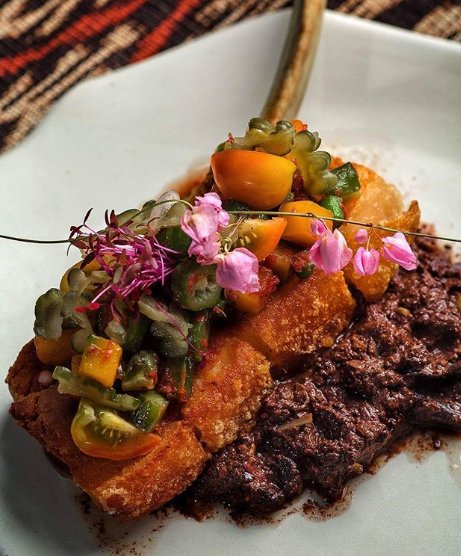Restaurants these days are upping their game when it comes to interiors—from sweet and chic to laid-back and industrial. But beyond such frills, a restaurant’s menu still remains as its lifeblood. It’s what drives customers to walk into that door, and it determines how much profit the place can earn in a day. A restaurant’s food, in turn, decides its success, that’s why putting together all possible dishes in one menu requires careful planning.
While such task may seem trivial, coming up with a menu that works is actually a form of science on its own: the kitchen crew should be able to pull off every item added to the list. It should also be cost-effective and marketable. In other words, coming up with the perfect combination of dishes is no walk in the park, so take cues from these restaurateurs and learn how to create a profitable restaurant menu.
UNDERSTAND YOUR CLIENTELE
It all starts with understanding what your target market wants. “The phrase ‘Know your market’ has been used, rinsed, repeated, and repeated again and again—for good reason,” says chef Noel Mauricio of the Tasteless Restaurant Group. It’s important to anticipate what guests will be looking for as soon as they enter the restaurant. “The general market usually goes out to eat with an idea of what they will want to order. Then again, there are diners who actively go out to try new things. This type of diners usually frequent chef-driven concepts,” adds chef Noel. Taking time to know your market’s needs and habits, including how much they’re willing to spend on a good meal, allows you to adapt accordingly.
KEEP IT CONCISE
It only takes a few seconds to grab the attention of a potential customer. This is especially true for menus posted on social media or through online-booking applications. “I would have appetizers or bar chow as the longest, and a good balance of everything else,” shares chef Gino Gonzalez of Café Ysabel.
Proper descriptions for every dish should also be included, and these have to be straight to the point. Avoid a lengthy menu that can result to guests taking more time to decide on an order while the staff waits on a table for too long.
DETERMINE “STAR DISHES”
These menu items are the main revenue drivers of the business—they define what the restaurant is known for. “Star dishes not only bring in revenue but also give identity to the establishment. These dishes get diners’ feet in the door,” explains chef Noel. Other items on the menu should support these star products, helping create a proper experience and bringing in additional income.
Dishes with mass appeal also play an important role. “For example, offering chicken dishes will be sale-able because statistics show that Filipinos eat chicken the most as compared with other proteins,” relates chef Gino.
KEEP IT WELL-BALANCED
“There should be a balance of all dishes—seafood, pork, beef, poultry, and even vegetarian—on the menu,” reminds chef Niño Laus of Alamat Filipino Pub and Deli and Agimat Foraging Bar and Kitchen. Consider that every customer has their own preference and dietary restrictions.
Balance should also come in flavors and textures. The menu should provide options for all four major tastes (sweet, bitter, sour, and salty), as well as a variety of textures (ranging from tender to crispy and smooth to crunchy).
CONSIDER THE DESIGN
A major consideration when creating a restaurant menu is its design. Choose the right colors, fonts, and layout that allow you to highlight the proper items. Everything has to be easy on the eyes. Photos should also be appetizing but realistic. Innovations, such as using tabletop tablets to order, can also add to your restaurant’s overall appeal.
BE ORIGINAL
With competition among restaurants becoming more and more challenging, it’s important to stand out through innovation. When potential diners search for your menu on social media, for instance, your offerings have to be immediately enticing. “Originality goes a long way in this industry where you tend to see the same kind of dish across several menus,” chef Niño relates.
When it comes to food, quality trumps quantity, so it’s a must to come up with original concepts that will keep guests coming back. “Remember that being profitable is not always how much you make per day, but how long you will last,” he adds.

To know more about how technology can help you run a successful restaurant, check out Globe myBusiness Academy and Globe Business.
This article was originally posted on Globe myBusiness Academy.
